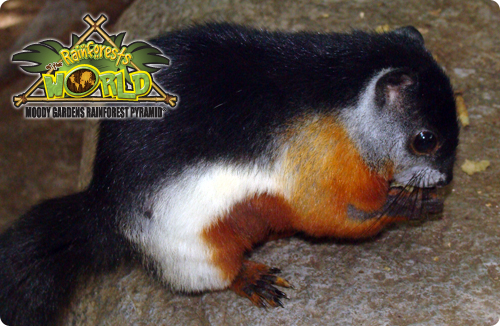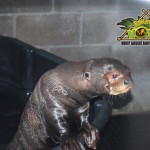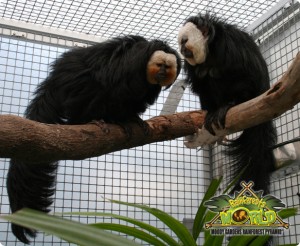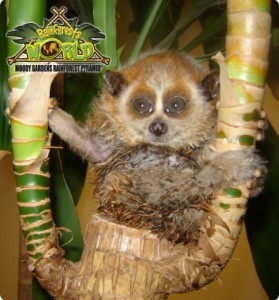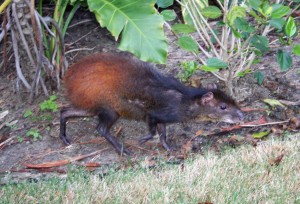When the Moody Gardens Rainforest Pyramid opens May 28, both first-time guests and regular Rainforest Pyramid patrons will marvel at the $25 million in enhancements that have transformed the attraction into a tropical paradise unlike any other in the nation. The bright green leaves, colossal trunks, multicolored flowers and fresh fruit of more than 1,000 species of exotic flora will flourish inside the pyramid. Free-roaming mammals, colorful birds, insects and reptiles will help propagate the forest, assisting with pollination. What was once a botanical garden is now a living, breathing rainforest.
As educational as it is entertaining, the Rainforest Pyramid is designed to inspire guests to join the ongoing race to save the rainforest. This one-of-a-kind attraction is central to the Moody Gardens conservation and education mission, and it is an expression of gratitude to the disappearing rainforests of the world.
Despite their unique beauty and ecological importance, rainforests of the world are vanishing quickly. More than 12 million acres are being stripped every year for cattle farming, logging, and other trade and development. In a single century, 90 percent of West Africa’s coastal rainforests disappeared. Without tree cover, the once-moist soil of the rainforest turned quickly into dry, loose sand. This human-induced change in land cover converted countries like Nigeria and Ghana into desert, causing decades of drought, famine and death that persist today.
Nearly half of all prescription drugs in the United States have active ingredients derived from rainforest plants, treating maladies like gastrointestinal problems, arthritis, menopause, high blood pressure and even the common headache. One rainforest plant from Madagascar yielded compounds for two important anti-cancer drugs that helped increase the 5-year survival rate of childhood leukemia from 10 percent to nearly 90 percent.
As one of the few authentic indoor rainforest replicas in the world, the Rainforest Pyramid at Moody Gardens hosts myriad plants and animals commonly found in African, Asian and American rainforests.
“Biodiversity is important in the rainforest, so we wanted to deliver an accurate representation of what would be found in these environments,” said Donita Brannon, Horticultural Exhibit Manager of the Rainforest Pyramid®.
Each plant within the Rainforest Pyramid has its own story to tell. Here are a few:
- The Brazilian Beauty Leaf (Calophyllum brasiliens) is identified by distinctive white flowers and leaves. But humans have another reason to admire this tree—the latex in the leaves contains three potent HIV-1 inhibitors.
- Ylang-ylang (Cananga odorata) is a tree treasured for its delicate scent. The flowers contain essential oils that are commonly used in skincare and aromatherapy products and also serve as the top note in Chanel No. 5, one of the best-selling perfumes in the world. Besides its unique fragrance, ylang-ylang is used to treat motion sickness, lower high blood pressure and calm anxiety.
- The largest plant in the Rainforest Pyramid is a 30-foot Sacred Fig (Ficus religiosa). The tree weighed approximately two tons when it was delivered and took three days to plant inside the pyramid. Hindus and Buddhists consider the plant sacred because Siddhartha Gautama is believed to have been sitting under a Ficus religiosa when he achieved enlightenment.
- The carnivorous Pitcher Plant uses a deep, liquid-filled sac to capture prey. Bright colors lure insects into the “pitfall traps,” where they are drowned and dissolved by enzymes, then absorbed by the plant for nutrition. Some larger species of Pitcher Plants even feed on reptiles and small mammals.
- Other plants like cocoa, the cola nut, tapioca, vanilla, cinnamon and allspice are indigenous to the rainforest but end up in pharmacies, refrigerators and spice cabinets across the United States.
“Seeing all these plants in person is a truly unique opportunity that we hope will encourage visitors to help protect our rainforests as much as possible,” Brannon said.
Here’s a sneak peek at some of the plants that live in the Rainforest Pyramid® or click here if video below is not functioning:


